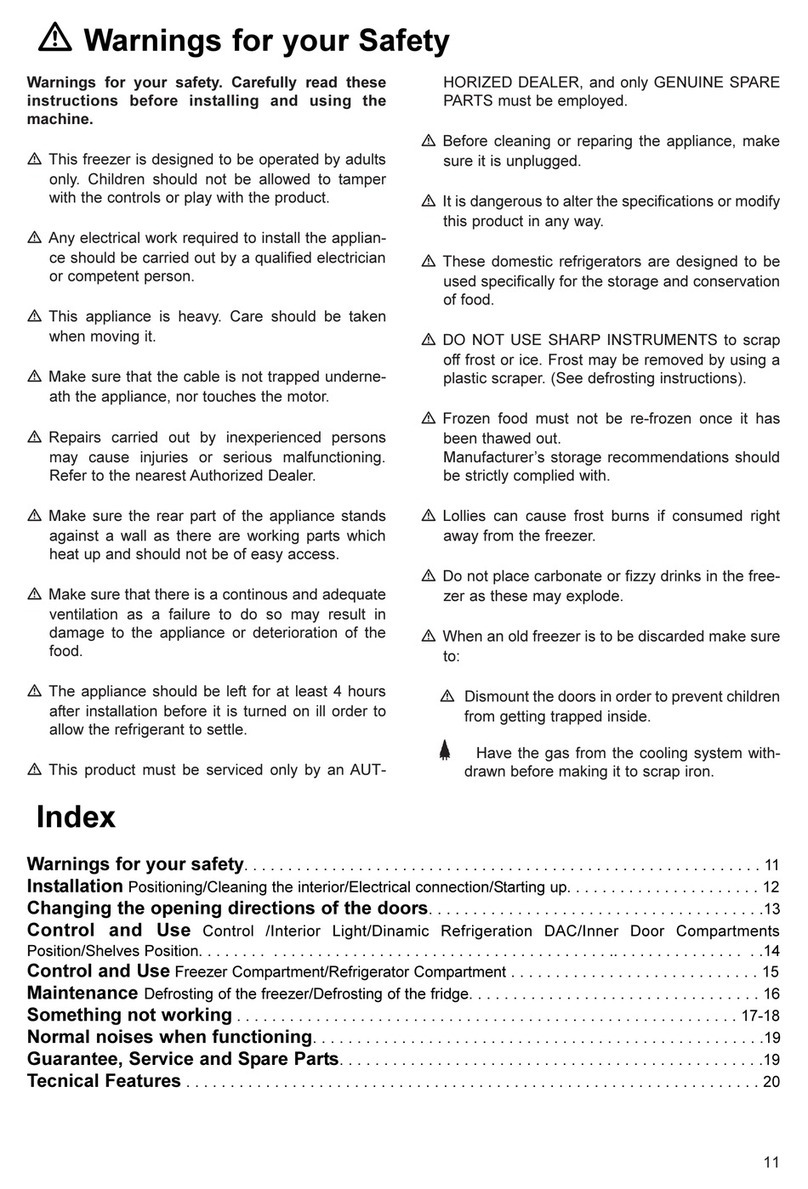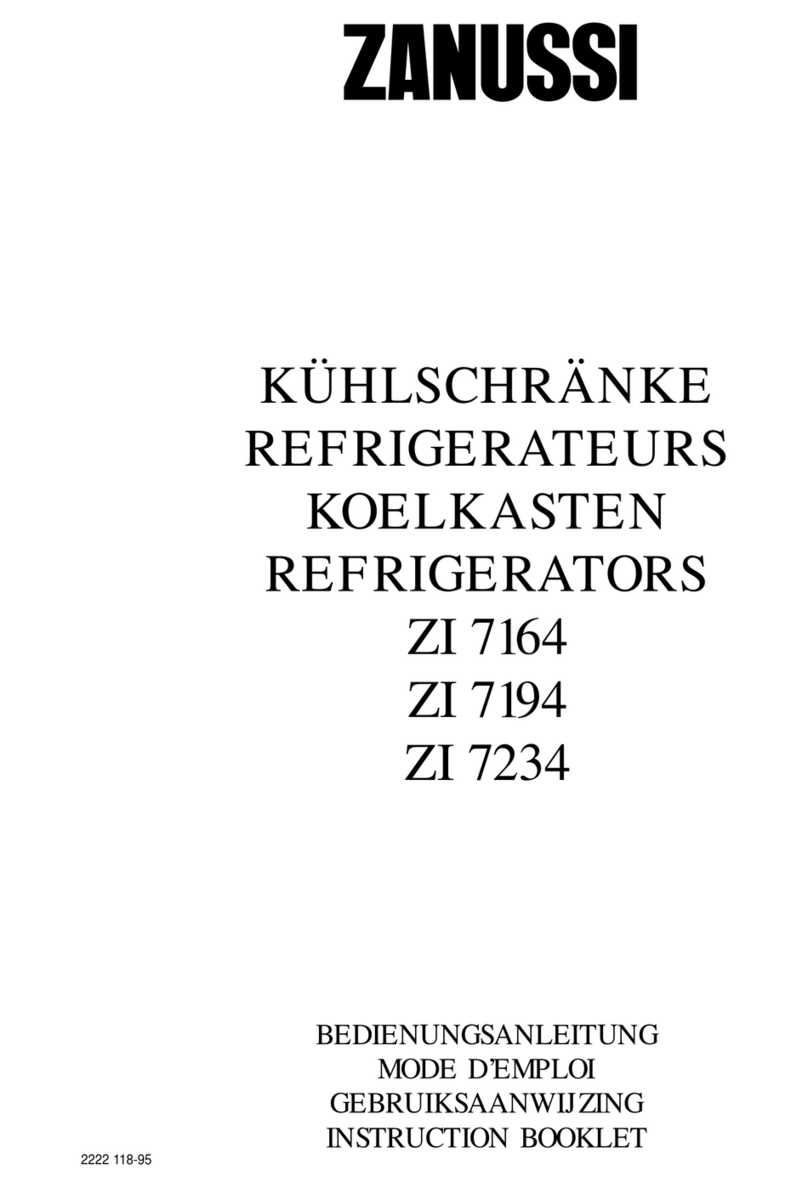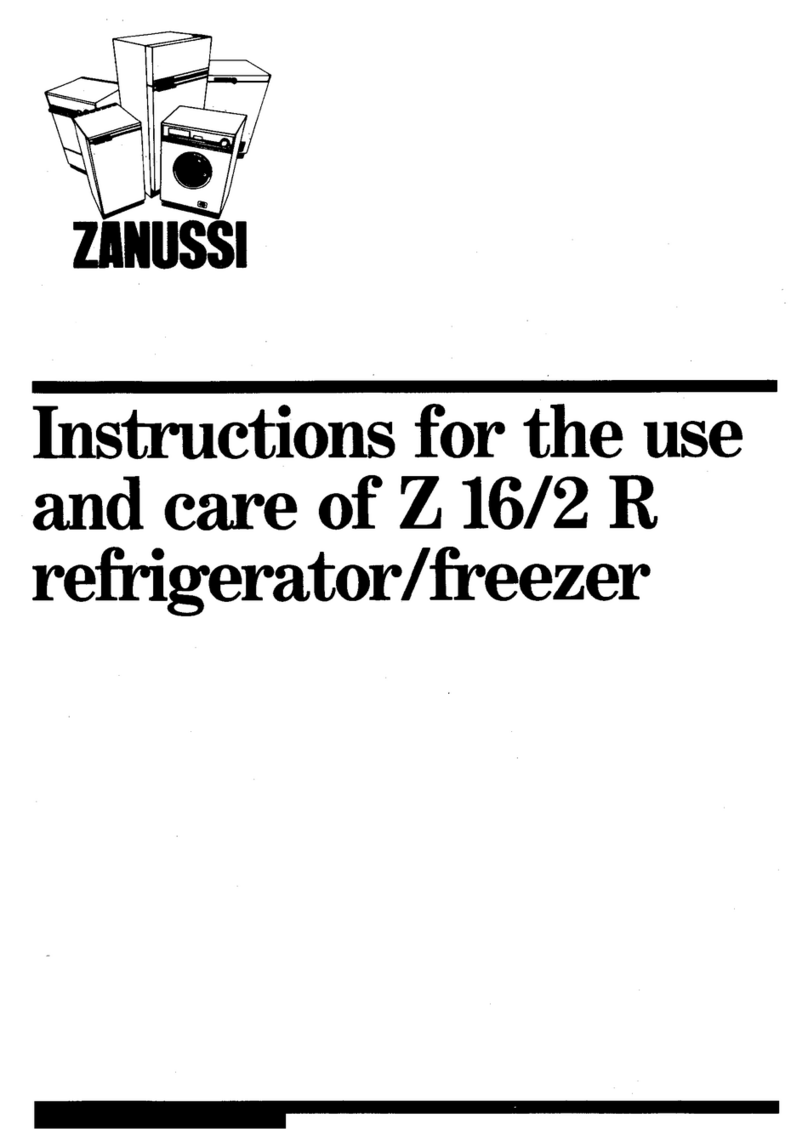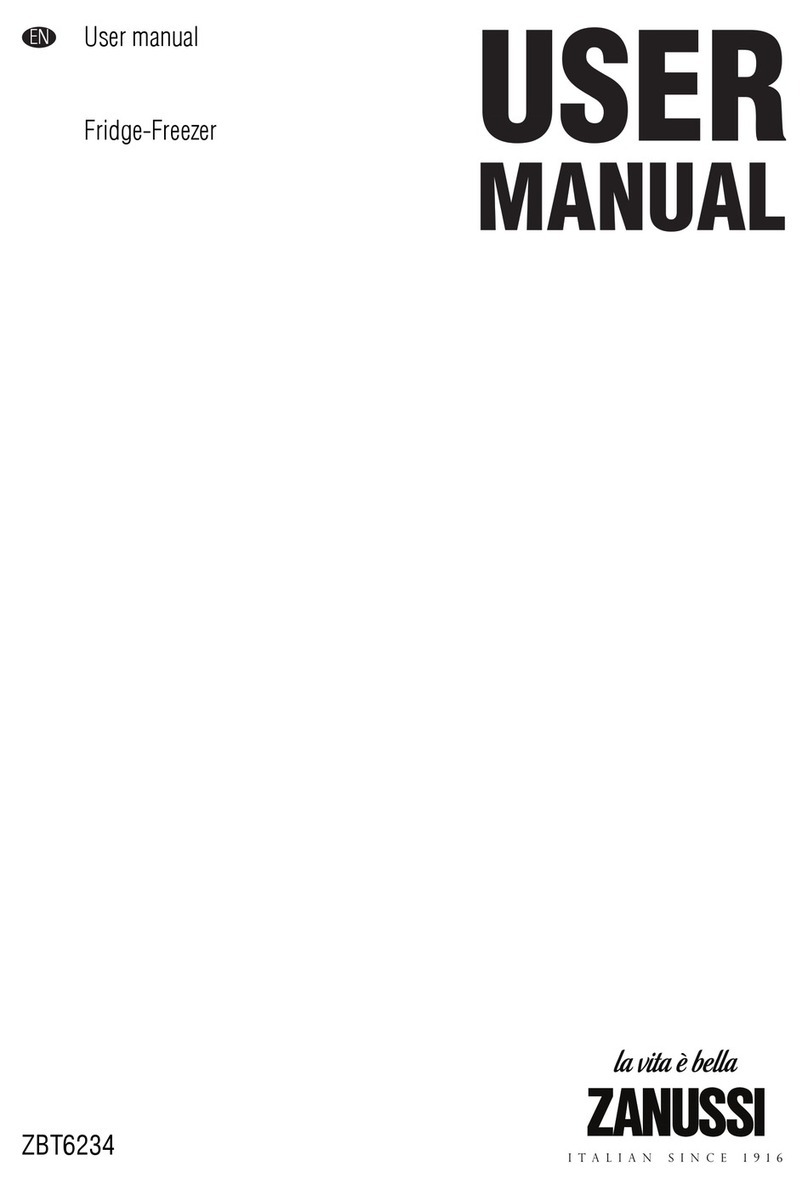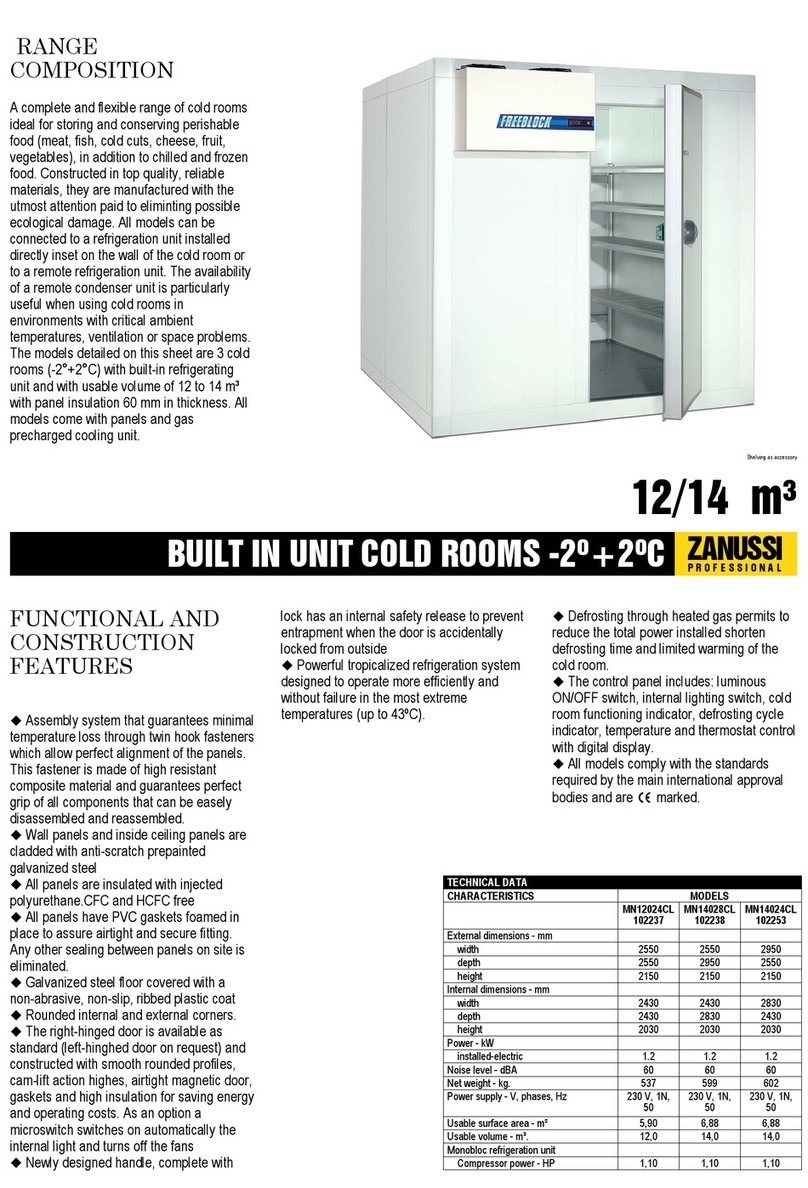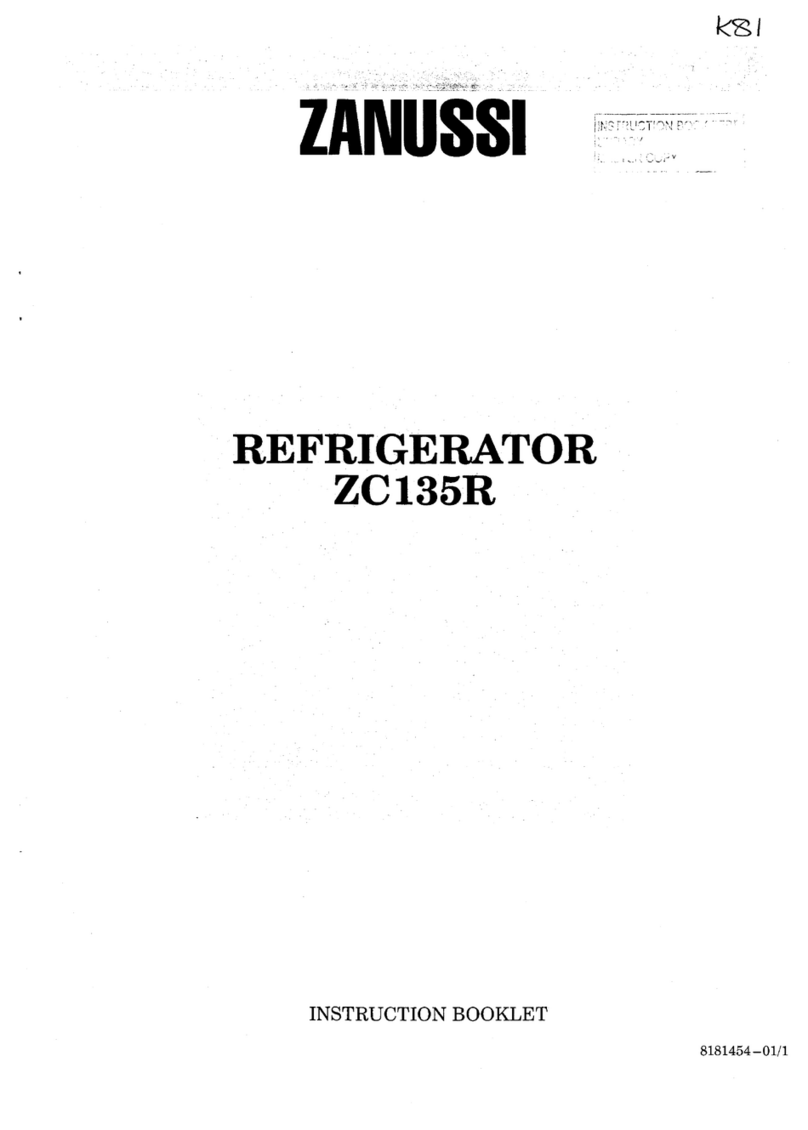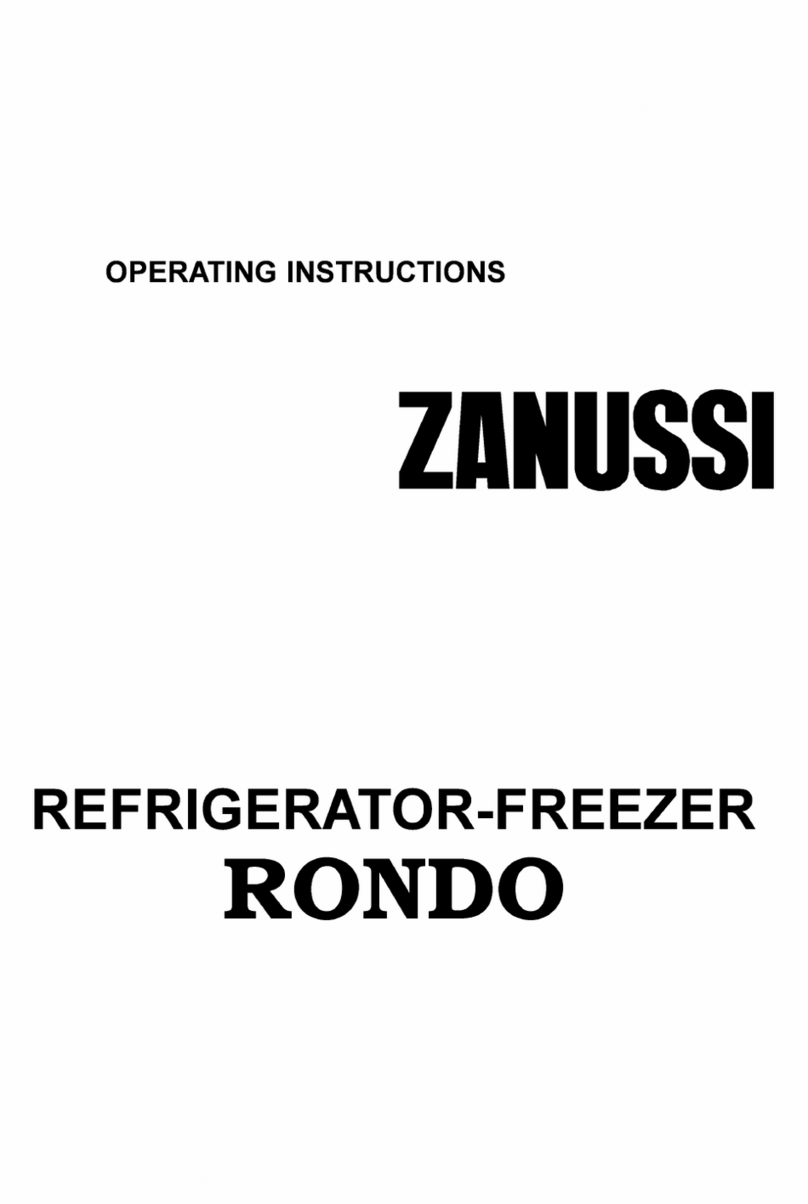6
Regulation and Control
I Freezer control knob
Setting the knob at 1 will give you a minimum fre-
ezing temperature. Setting 7 will give you the
maximum freezing temperature. For normal use
set the freezer at a middle setting (The exact set-
ting will depend on your usage of the freezer).
2 The door alarm
If either of the doors is left open for a prolonged
period of time the door alarm will start to beeb and
a red flashing light will go on. Pressing the alarm
button will switch the buzzer off and the light will
stop flashing, but remain red. If you simply shut
the doors, this will also switch off the door alarm
buzzer and the light automatically.
3 Temperature alarm
If the internal temperature has risen significantly
the temperature alarm will sound and the light will
start to flash. To switch the alarm off simply press
the temperature alarm button. This will stop the
buzzer and the red light will stop blinking and
remain red.
The temperature alarm may go on because:
a.- The doors have been left open.
b.- There has been a power failure.
c.- More than the recomended amount of food has
been put in at one time.
d.- You need to set the temperature controls to a
colder position.
If the alarm goes on constantly you should contact
you THECNICAL OFICIAL SERVICE.
4 Fast Freeze
This feature is designed to help you freeze
your food more quickly. It is best to press the
fast freeze button before going shopping (pre-
ferably 3 houres in advance) in order to have
the freezer in an optimal state to put your food
in. If you havent pressed the button prior to
purchasing your food you can of course put
your new purchases in, but it will take longer
for the freezer to cool down. (If you put a lot of
fresh food into your freezer you could cause
the temperature alarm to go on. For further
information see sention on temperature
alarm).
5 On/Off button
To make the product work press the ON/OFF
button continuosly for 3 seconds. To switch the
product off press the button continuously for 3
seconds. When the product has been plugged
in and the button pressed for the 3 seconds,
the button will light up in green. If the ON/OFF
button is green the freezer knob and fridge
knob will also be lit up.
6 Fridge control
Setting the knob to the standby position when
the freezer is working, but the fridge if not
being used, (for example when you go on holi-
day), will help you to reduce energy consump-
tion. The fridge door however must be kept
closed.
By turning the knob clockwise you will pro-
gressively cool down the fridge. Position 5 is
the coldest setting possible.
If neither the fridge nor the freezer are being
used (i.e. The appliance switched off), both
doors should be left open. This will help to
avoid any possible smells caused by high
levels of humidity.
